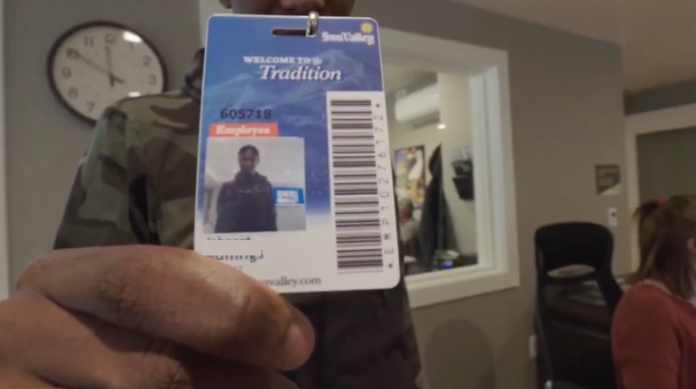
Gov. Little says apprenticeships will “help solve Idaho’s labor challenges”
By Eric Valentine
We’ve all experienced it. You head out to meet a friend somewhere, let’s say your favorite eatery. Mask? Check. Event approved by your favorite local jurisdiction’s governing body? Check. You’re ready to party like it’s early 2019.
But then you arrive and find the restaurant has closed—not entirely, thank goodness—but for the day due to lack of servers, or cooks, or other essential workers not being aplenty. Friend asks if you checked online first? Check. Shop hours these days, especially for smaller businesses, is a 50-50 or TBD kind of thing. Your friend is going to have to get their duck-liver charcuterie somewhere else. And you’re left standing there thinking the title of this piece: Where have all the workers gone?
This week is National Apprenticeship Week, and to launch the part-marketing, part-political, part-serious event, Idaho Governor Brad Little penned an opinion piece on his website titled “Apprenticeships help solve Idaho’s labor challenges,” which reads optimistically as a win-win solution for employer, employee, and consumer. It also reads as an preemptive answer to the question in the title of this piece: Where have all the workers gone?
The governor’s narrative went something like this:
Post-lockdown, not all workers could return to work until schools and daycare were fully operational
Economic recovery, aka inflation, kicks in, so workers are being a little more picky about which lower-waged jobs they’ll take (and, oh yeah, that whole “the virus is mutating” thing)
Federal unemployment assistance has bumped up unemployment payments, which makes workers less incentivized to get back to work. So by late spring, Little opts out of the federal money and reduces Idahoans’ unemployment checks to what Idaho thinks they should be, stating, “Employers are telling me one of the big reasons they cannot recruit and retain some workers is because those employees are receiving more on unemployment than they would while working … My decision is based on a fundamental conservative principle—we do not want people on unemployment. We want people working. A strong economy cannot exist without workers returning to a job.”
Needless to say, only some of those workers came back, and anecdotal evidence as well as opinions from economists say it’s because rationale like the governor’s is not what’s at play. So Wood River Weekly asked our local Chamber of Commerce director his thoughts on the matter and what follows is what Mike McKenna said.
WRW: Does the Valley have a labor shortage that is normal, problematic or something else?
MM: Yes, we have a labor shortage that has been growing more problematic each year as the cost of living here, especially housing and food costs, keeps rising. The service industry is being hit especially hard by this. One of the challenges we face that some other ski areas like Park City or Whitefish or Mammoth don’t have as much of an issue with is that we don’t attract the young ski bum crowd—20- and 30-year-olds—who traditionally fill these service jobs in other ski towns.
WRW: One political-economic narrative was that once the UE benefits normalized and school days normalized, people would get more serious about landing a job. But we’re still seeing the same labor shortage. Any thoughts on this? What are you seeing/hearing locally?
MM: There is a false narrative going on about unemployment benefits being the root cause. That has certainly not been an issue in Blaine County as we have very low unemployment numbers and the Idaho Department of Labor has even closed down their unemployment office here. Part of the problem isn’t just the COVID impacts, but that so many members of the large baby boomer generation are retiring and getting out of the labor market and we don’t have enough qualified people to replace them. This was happening before the pandemic hit and has only been exacerbated by it.
WRW: Would it be beneficial to expand or ease the role of undocumented residents and/or assylum seekers given certain labor shortages? Is the Valley losing out on any opportunities when it comes to particular solutions or specific populations?
MM: No. Easing documentation is not a good or viable solution for Idaho. There doesn’t appear to be any magic formula to solve this issue that we’re not taking advantage of, outside of Marty McFly showing up in his DeLorean so we can send him back in time to talk local leaders into being more proactive about employee housing.
Ah, the housing issue. That’s something we examine in another piece: “Housing Essentials” on page 1.
Editor’s Note: Gov. Little’s sidebar can be found on his office’s official website gov.idaho.gov under the ‘press releases’ section.


